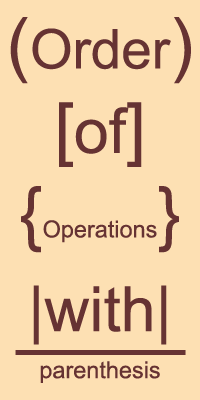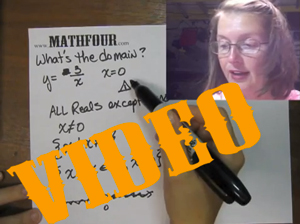
The Order of Operations series comes to a conclusion with a discussion of addition, subtraction and how textbooks often disagree! Continue Reading →

The Order of Operations series comes to a conclusion with a discussion of addition, subtraction and how textbooks often disagree! Continue Reading →

Last week’s article on the order of operations included a quick mention that division is the same as multiplication – but different. Now’s the time to explain that a bit. Continue Reading →
Next in the series explaining the order of operations is this discussion on the relation of exponents, addition and multiplication and how to remember the order of operations… the natural way! Continue Reading →

Math concepts are everywhere. Identifying them when you see them can make teaching math a breeze. Here’s one place to find some math concepts: at the dinner table! Continue Reading →
Next in the series explaining the order of operations is this discussion on exponents and everything this includes. And roots and logs are in this one! Continue Reading →

We continue the series explaining the order of operations with a discussion on parenthesis and all the various meanings of this word. You’ll be surprised as to what it can mean! Continue Reading →
Part 1 in the series. The order of operations is a set of rules – like the drivers’ handbook for math. If everyone follows the rules, we’ll all be safe. But if someone makes a bad turn, we could be looking at a crash. Continue Reading →
The rule that non-calculator users must apply when doing arithmetic is the distributive property – a fundamental tool for doing algebra. Letting students use them too early will reduce their understanding of Algebra! Continue Reading →
The domain and range of a function are challenging to understand. Here’s an explanation of the range of a function – and how to see it in action! Continue Reading →

Finding the domain of a function is slippery and misunderstood. Why do we do it? Why do we need domains anyway? And how do you find the domain? Continue Reading →